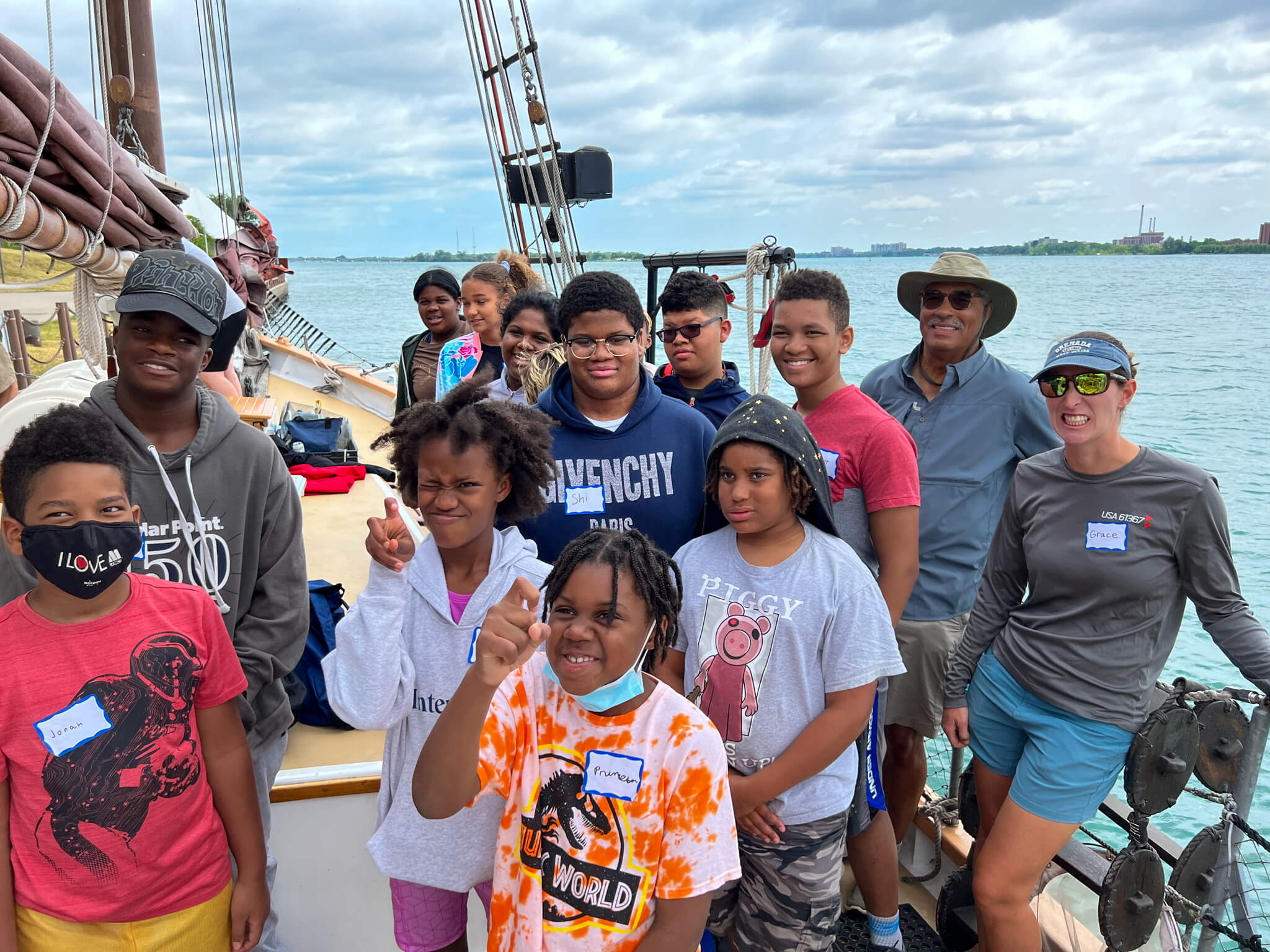
Turn off your phone. Close your eyes.
Tune in to your senses. What do you hear? What do you feel?
Students aboard the two-masted schooner Inland Seas this summer shouted out answers as they sailed along the Detroit River: Waves! Gulls! A noisy freighter!
“The wind is all in your eyes!” one student exclaimed.
The students were participating in the Skiff and Schooner program piloted by the University of Michigan’s Detroit River Story Lab in partnership with Detroit’s Green Door Initiative. The program lets school-age students from throughout metro Detroit experience the river from the decks of a tall ship while learning about the environmental and cultural heritage of their communities.
The place-based, experiential learning program is funded, in part, by a nearly $32,000 grant from the Community Foundation for Southeast Michigan. The Community Foundation is committed to supporting initiatives — like the Skiff and Schooner program and The Great Lakes Way® trail system — that connect residents and visitors with the world-class freshwater, wildlife, recreation and heritage opportunities our region offers.
According to Detroit River Story Lab co-founder and U-M professor David Porter, the river’s rich, layered history remains a largely untapped resource among local communities. By collaborating with organizations dedicated to elevating regional stories — including the Black Scroll Network, the Detroit Historical Society, the Detroit River Project and the Michigan Department of Natural Resources Outdoor Adventure Center — the Detroit River Story Lab can help reconnect communities with a vital source of inspiration and empowerment, Porter says.
The Detroit River Story Lab’s Skiff and Schooner sailing experience also encourages a future generation of environmental stewards who can care for the health of the river and the communities that rely on it, he adds.
‘I found a love for the water’
In July, middle-school students from Detroit Community Sailing Center — a Black-led, youth-serving organization on Belle Isle — joined one of 15 educational sails the Skiff and Schooner program offered this summer.
The boat’s horn blasted as loud as a semi-truck’s before the Inland Seas pulled away from shore and motored out into the international waterway. Inland Seas staff then worked with the students to raise the wind-whipped sails as sunshine fought its way through the clouds.
The three-hour outing featured presentations and hands-on learning activities with educators from the Inland Seas Education Association, the Outdoor Adventure Center, and the University of Michigan. Topics included local water management issues, microplastics, plankton, and Detroit communities’ historical relationship to the river.
Students learned to steer the schooner and handle its sails, tossed a specialized net overboard to collect plankton, peered through a microscope to view the tiny organisms, and tested water samples.
“Being in Detroit, being on the water, connecting with nature — especially during COVID — it was an escape,” said Neala Muniz, 15, of Eastpointe. “I found a love for the water.”
‘We’re impacting communities’
Marquise Griffin, a U-M doctoral student pursuing a joint degree in English and education, led an onboard learning station about Detroit as a river city. He explained to the students that Black and indigenous people were fundamental to harnessing the river’s resources to build the city. But, over time, their communities were pushed away from the Detroit River due to structural racism.
Living deeper in the city — disconnected from nature and subject to concentrated industrial pollution and the criminalization of moving while Black — created chronic health conditions and a fraught relationship with nature for many people of color, he said. Today, this legacy can impact their access and willingness to engage with nature through swimming, boating or hiking and lead to diminished well-being and quality of life, Griffin says.
Teaching students how their communities connect with the river’s cultural and environmental heritage can create new ways of thinking about nature and how they fit into it, he says.
“Your body contains a story. It can hold onto trauma that can be addressed through education, especially engaging all senses and the natural world,” Griffin says. “We’re impacting communities. We’re having what I hope to be an empowering effect. We can inspire students to dream.”
